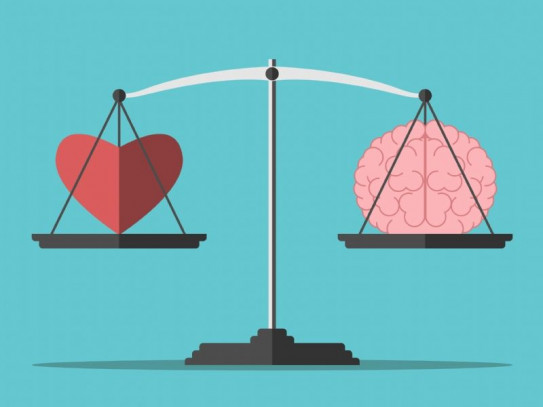
Human marketing: putting the emotion and authenticity of customer relationships back at the heart of brand preference
At a time when the focus is on data and AI, putting people back at the heart of corporate values is more essential than ever. Why are human, interpersonal, emotional and authentic relationships key for companies? In what way is the human connection the true differentiating factor for brands today?
Emmanuel Macron recently announced his plan to make France the champion of artificial intelligence, by attracting the best talents to France and becoming the international standard-setter in terms of AI innovation and research. AI goes hand-in-hand with data. Each depends on the other. And to what end, if not to further improve the performance of companies and increase value for the end customer? This is therefore excellent news: by developing big data and AI, marketers, decision-makers and entrepreneurs will have access to tools enabling them to better understand and interpret the behaviour of their customers and provide the best responses, all in real time. But is this sufficient to enable brands to truly stand out and engage their customers in a lasting relationship?
Data and AI: yes, but...
The use of AI has become essential in order to better understand the habits of customers, which have become particularly complex. It is no longer enough for them to have access to an effective and satisfactory service when they want and via their preferred channel. They now need a reason to consume; their behaviour is above all determined by their values, influences and the context of consumption. Consumers are human beings endowed with a conscience, freedom and creativity.
Subjectivity plays a major role in forming their opinions and reactions... and they are proud of this, fully accepting their complexity. For example, consuming certain products in supermarkets in order to benefit from low prices, to the detriment of quality, while at the same time, for other products, preferring organic production, freshness, quality and local supply chains, even if this means paying a higher price and taking more time. Price is no longer the number one differentiating factor: it is now replaced by the dual factors of "Experience & Meaning", which are directly connected to the human relationship. Consumers are looking for brands that reach their inner selves and can make them profoundly and lastingly change their habits. Managing to reach this inner self represents the huge asset of having customers who are brand ambassadors.
Because in all their complexity, consumers are willing to engage themselves for causes. Better yet, they can adopt a wonderful form of virality: they live in networks, in communities, and they love to share their best and worst experiences. What a challenge it is for brands to decipher the expectations of their customers! When based on reliable and enriched data, artificial intelligence is able to provide marketers with intelligible, real-time means of interpretation, enabling them to extract the essence and key insights to be considered as a priority.
Going that extra mile means opting for the human connection
Then there is the question of interpreting and using these results to create differentiation! Decision-makers with a critical approach will look for the causes of a problem raised and identified by AI, explore the full potential of an opportunity detected, interpret and overcome areas of friction experienced by customers, and invent and create solutions, messages, images, etc. It is by resolving these areas of friction and highlighting the benefits thereby generated that the customer's perceived value of a product or service will be significant. And it is by expressing and getting across messages with a strong impact, through words, images, graphics, colours, sounds, textures, etc., that customers will be encouraged to react, change their habits and become engaged. However, AI alone is not yet sufficient to be able to enrich data with the thoughts of end customers, or to replace the free will of decision-makers, who will make up their own minds about the best solution and associated risks.
How can brands detect their customers' "triggers", which can be added to the results provided by artificial intelligence? How can they identify influencing factors that can be used to increase the conversion of targets into customers, and even ambassadors? How can they create this powerful, ultra-personalised relationship, which can truly resonate with customers and engage them with the brand?
This can be done by creating a personal relationship with customers. By focussing on empathy, by going beyond comprehensive knowledge that is based solely on data, by reaching out to customers in a sincere and authentic manner, enabling them to put a face and a voice to the brand, and by making the most of these meetings to detect the secrets of their reactions, thoughts and emotions. By empathising with their doubts, weaknesses, influences and emotions; by perceiving those minute and fleeting details that are nevertheless life-changing! By basing themselves on the day-to-day lives of their customers, brands can interpret data, design products and services that make the difference, and exploit the creative potential released by exercising empathy.

They can work on new promises and offer practical benefits for end customers; benefits that bring them real and tangible added value. This added value is driven by a language and visual identity that resonate with them. Faced with these promises and benefits, they react in an effective manner, because the brand has reached out to gather things they are sensitive to. As a result, the solutions and messages designed will be more effective and perform better. And we can see that it works! Entrepreneurs that have innovated by designing value propositions and business models based on a human-centred approach, and by providing solutions for their customers' friction points, which are integrated in their design processes, have been met with great success. Uber, AirBnB and BlaBlaCar are a few examples of successful human-centred approaches.
Of course, this works insofar as the human factor is in tune with the reality of market potential and the company's strengths and weaknesses. The differentiation effort and economic viability can then be added to the value proposition created.
Welcome to the neo-phygital era!
Opportunities for brands to meet customers and enrich their customer knowledge must become the norm. Including focus groups, experience-based workshops, individual meetings and participative events, such opportunities can take many forms. The main point to bear in mind is no more mail shots and mass marketing! What counts is a true, physical, human meeting.

Sharing an experience, a special moment. A voice, a face. Brands need to create a persona. Telephone advisers or sales representatives in stores represent key contact points during the purchasing cycle, gathering the thoughts and emotions of customers on a daily basis. All the employees of a company have a key role to play in this human-centred approach.
Time saved using AI to analyse complex and voluminous data can be productively reinvested in acquiring a more sophisticated understanding of the actual customer experience.
How about the personas, conversational agents and other tools developed and run using AI? They offer a point of entry to initiate a meeting. Chatbots can be used to make an appointment with a contact for an upcoming event that a brand has planned for a specific customer profile. The persona created by algorithms indicates who to meet as a priority and which information should be completed by emotion and thought. Digital technology remains an excellent way to go further and create physical meetings between brands and their customers.
This brings us into the area of 'phygital', which goes beyond the world of retail. "Neo-phygital" is about a brand's ability to bring together physical and digital to make them work for each other, whether the meeting is in a store or at an event outside of the usual setting. This could be a sports goods brand organising a sporting event that brings together its customer community, in order to offer them an experience based on their passion, while trying out new products. Or it could be a pyrotechnist selling fireworks to event organisers, which has everything to gain from measuring satisfaction by gauging the appreciation of its fireworks among targets, in order to know which types of products to develop, while meeting the requirements of intermediaries. This approach concerns all companies that want to put the focus back on their customers, whatever their sector and whether it's BtoC, BtoB or BtoBtoC.
Beyond marketing, the company as a whole can reshape itself through the lens of human relationships, in order to design and adapt its products, services, customer relationship programmes, etc., to be more focussed on value, emotion, sincerity and authenticity.